Menú de configuraciones rápidas (IFP50-5)
ViewBoard OS 3.0
To access a Quick Settings menu, which includes input source options and display/audio settings, press the input source 

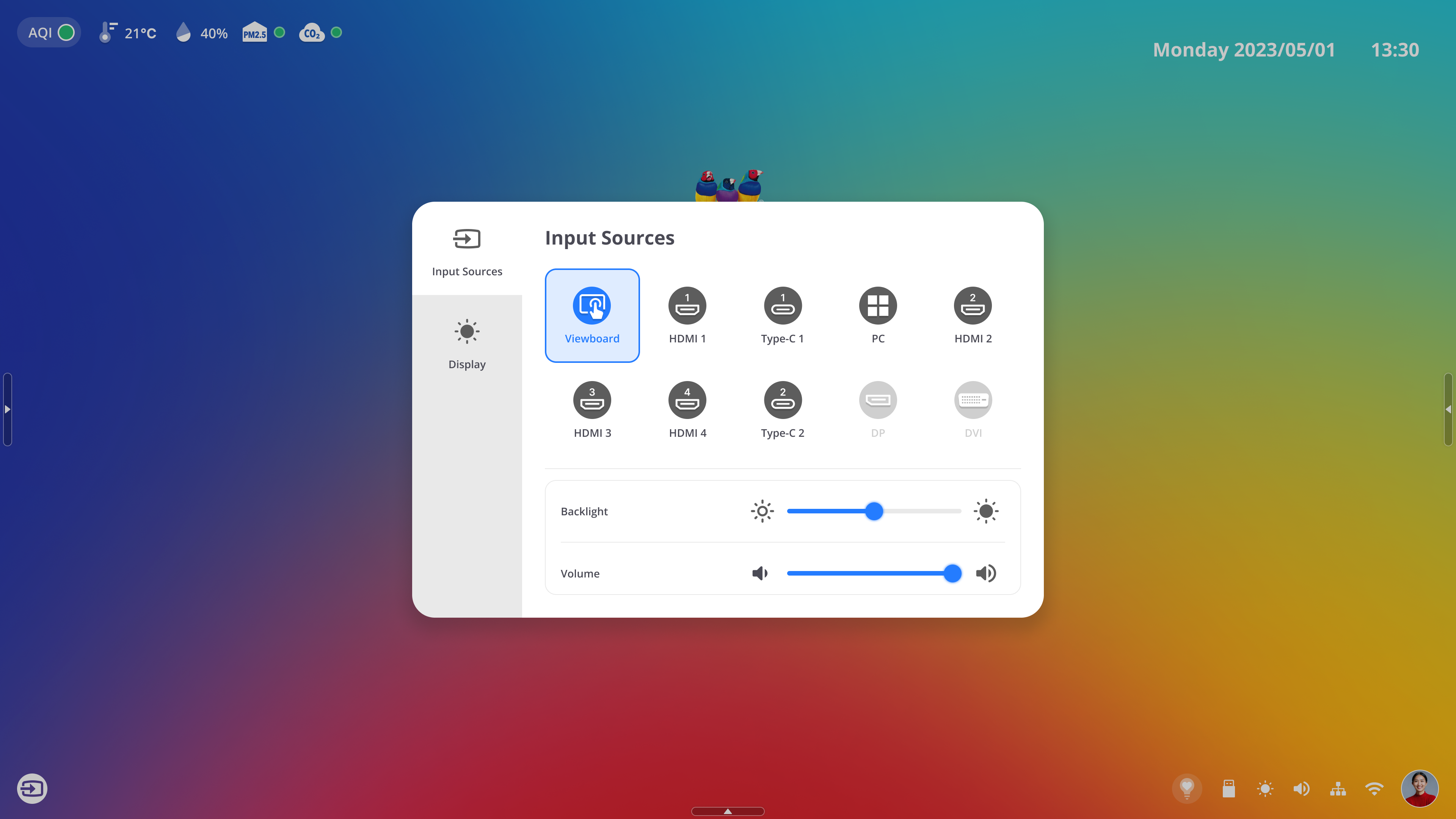 Quick Settings open with input tab selected, overlaying the home screen.
Quick Settings open with input tab selected, overlaying the home screen.
ViewBoard OS 2.0
To access the Quick Menu, in the input source tray, you'll find a menu that quickly allows users to select different ViewBoard options.
 Menu option in the input source tray.
Menu option in the input source tray.
Input Sources
ViewBoard OS 3.0
In the Menu popup, find the following options:
- Quickly switch between available input sources.
- Adjust device brightness and volume.
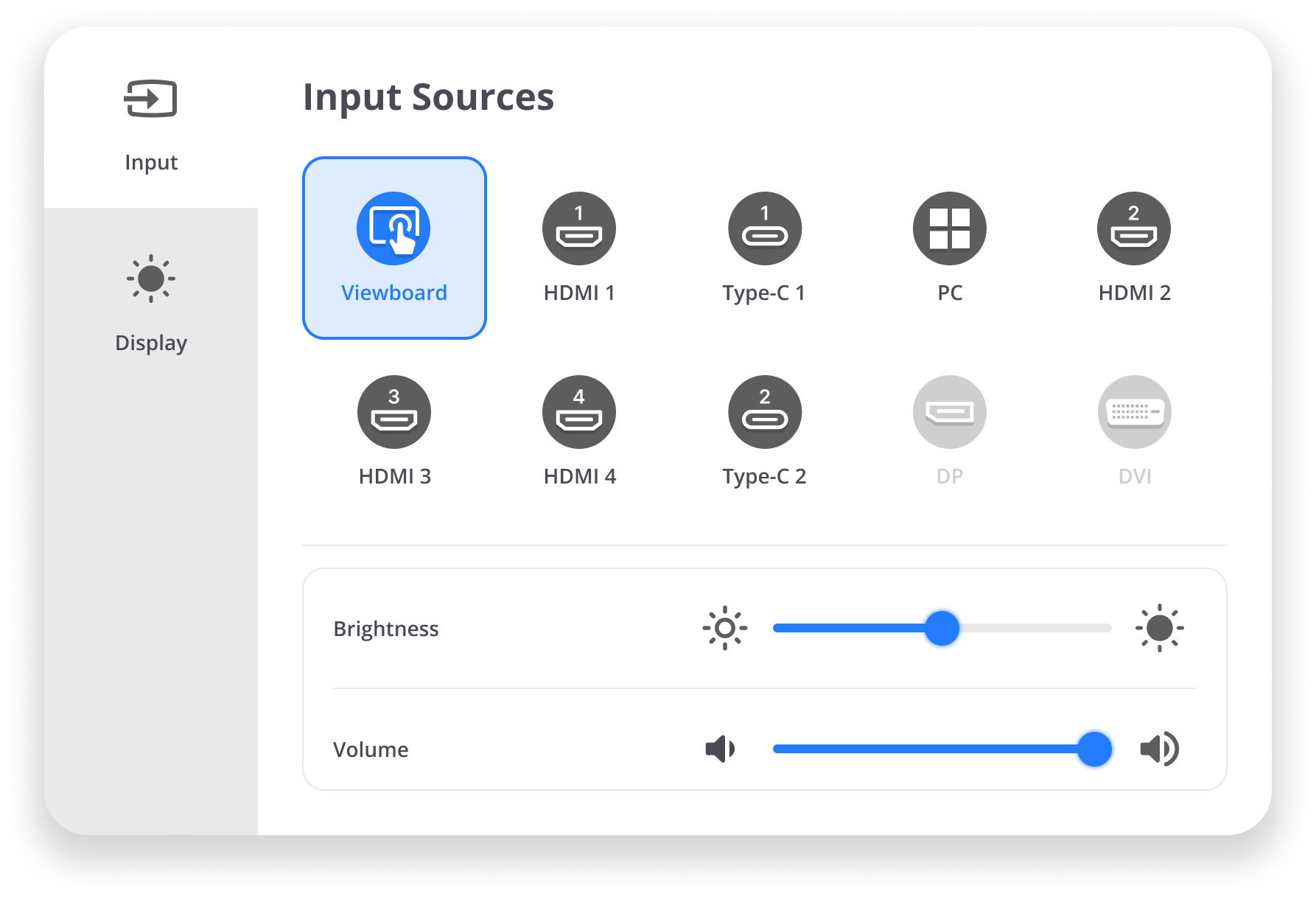 View of Input settings.
View of Input settings.
ViewBoard OS 2.0
- Quickly switch between available input sources.
- Adjust device brightness and volume.
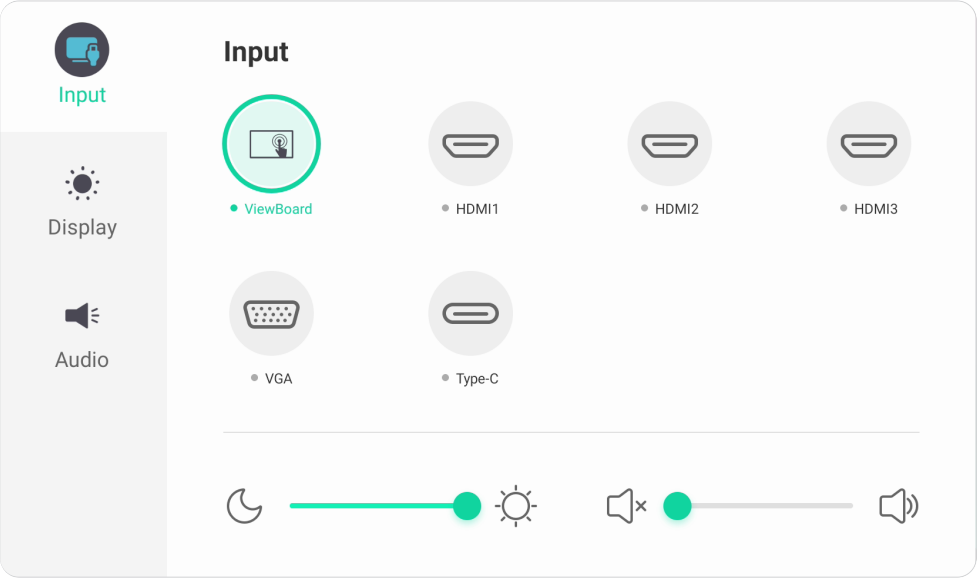 View of Input settings.
View of Input settings.
Display settings
ViewBoard OS 3.0
Adjust various display settings, such as auto brightness, eye care, and color temperature.
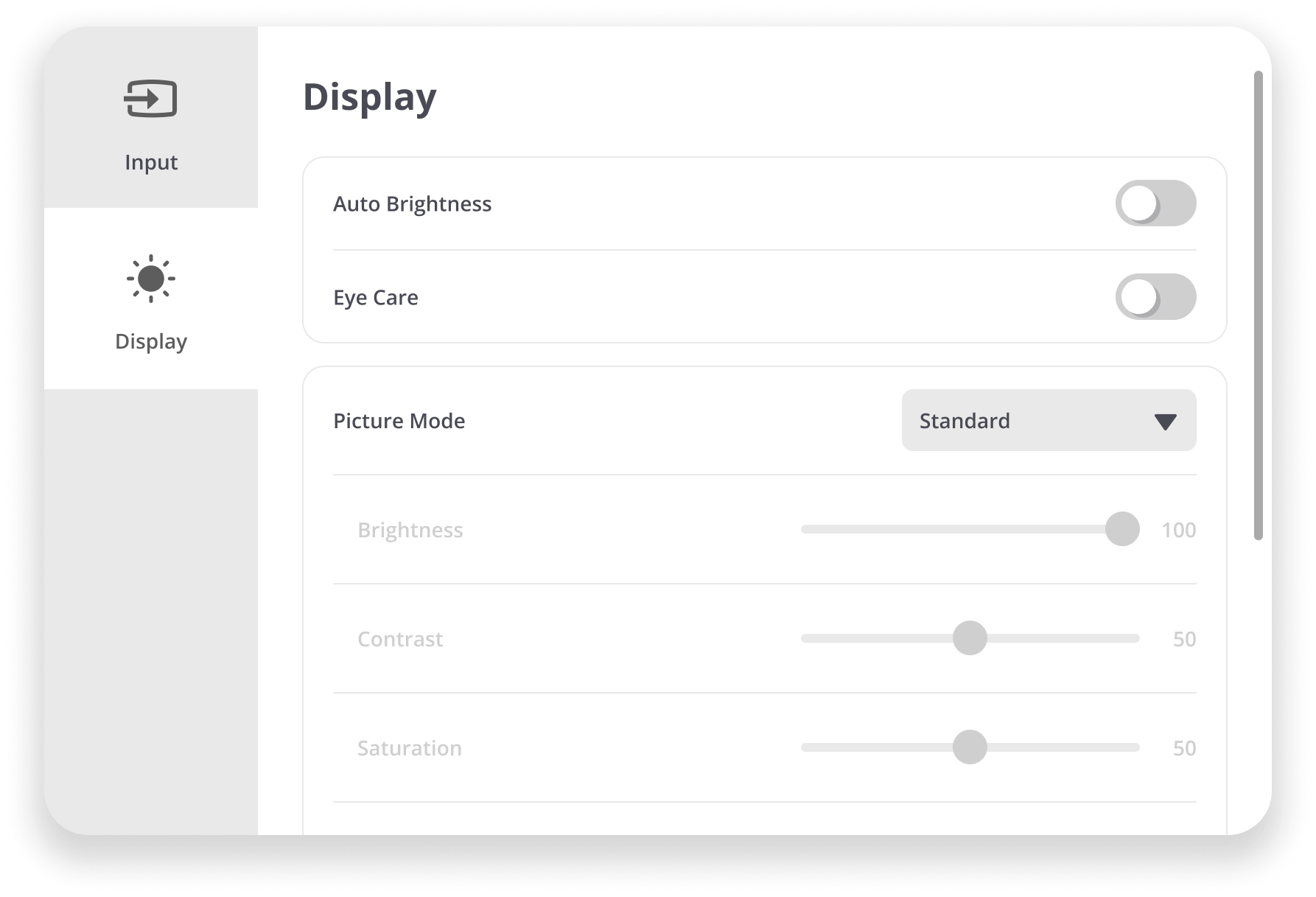 View of Display settings.
View of Display settings.
Setting |
Description |
|||||||||||
|---|---|---|---|---|---|---|---|---|---|---|---|---|
| Auto Brightness | Adjusts maximum brightness according to ambient light levels when enabled. | |||||||||||
| Eye Care | Filters high-energy blue light for a more comfortable viewing experience when enabled. | |||||||||||
| Picture Mode | Select a picture setting.
|
|||||||||||
| Brightness | Adjusts backlight levels of the screen. The higher the value, the brighter the image. | |||||||||||
| Contrast | Adjusts the difference between the image background (black level) and the foreground (white level). Use this to set the peak white level after you have previously adjusted the Brightness setting to suit your selected input and viewing environment. | |||||||||||
| Saturation | The amount of color in a picture. Lower values produce less saturated colors; in fact, a setting of 0 removes color from the image entirely. If the saturation is too high though, that color will be overpowering and unrealistic. | |||||||||||
| Sharpness | Adjust the definition of figures on the screen. A high value results in a sharper picture; a low value softens the picture. | |||||||||||
| Color Temperature | Adjust the color temperature value. Lower values make the image warmer with more reddish and orange tones and higher values make the image cooler with blueish tones. | |||||||||||
ViewBoard OS 2.0
- Adjust various display settings, such as auto brightness, energy saving, and low blue light modes (and more).
- Access advanced settings for HDMI range, AI PQ, and dynamic contrast.
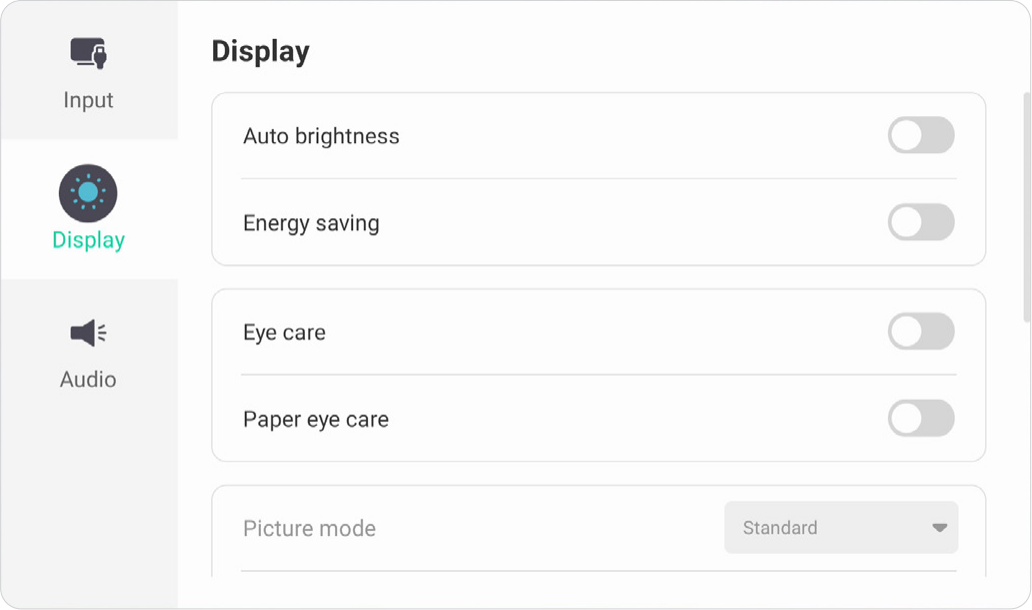 View of Display settings (1).
View of Display settings (1).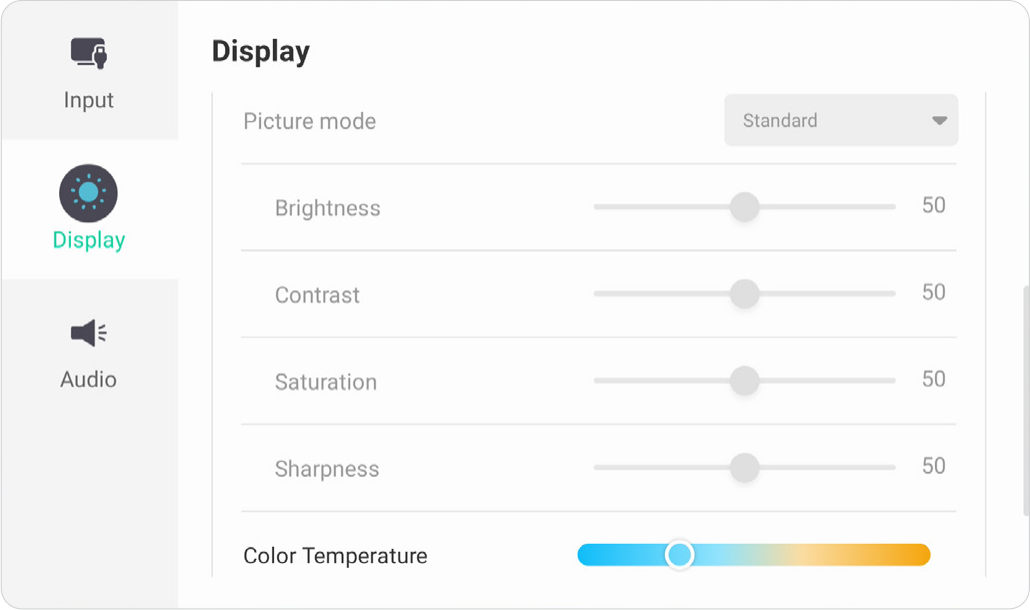 View of Display settings (2).
View of Display settings (2).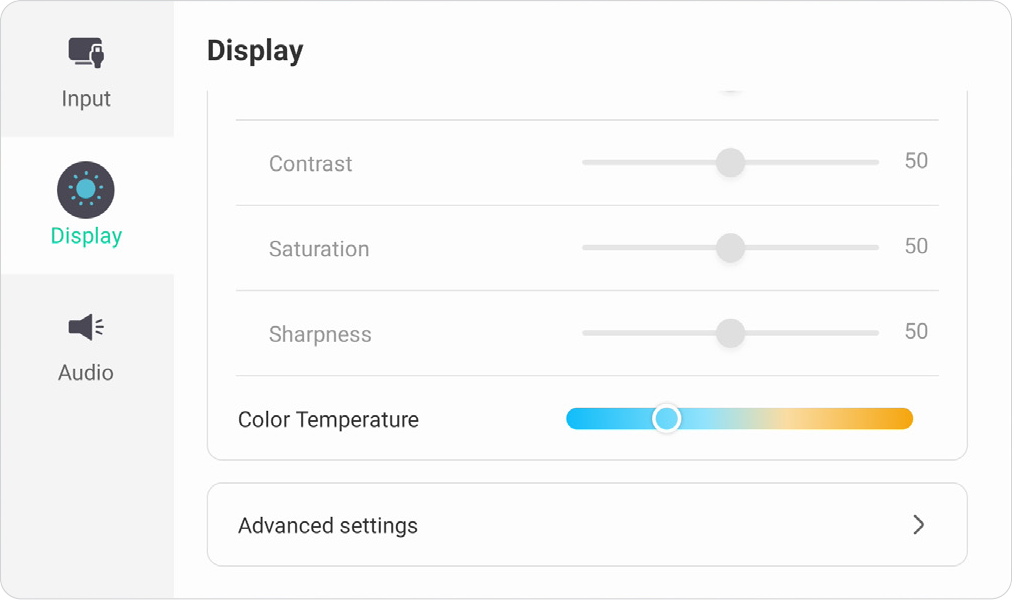 View of Display settings (3).
View of Display settings (3).
Setting |
Description |
|||||||||||
|---|---|---|---|---|---|---|---|---|---|---|---|---|
| Auto Brightness | Adjusts maximum brightness according to ambient light levels when enabled. | |||||||||||
| Energy Saving | Reduces power consumption when enabled. | |||||||||||
| Eye Care | Filters high-energy blue light for a more comfortable viewing experience when enabled. | |||||||||||
| Paper Eye Care | When Eye Care is enabled, adjust transparency to lower the brightness and warm the color temperature. | |||||||||||
| Picture Mode | Select a picture setting.
|
|||||||||||
| Brightness | Adjusts backlight levels of the screen. The higher the value, the brighter the image. | |||||||||||
| Contrast | Adjusts the difference between the image background (black level) and the foreground (white level). Use this to set the peak white level after you have previously adjusted the Brightness setting to suit your selected input and viewing environment. | |||||||||||
| Saturation | The amount of color in a picture. Lower values produce less saturated colors; in fact, a setting of 0 removes color from the image entirely. If the saturation is too high though, that color will be overpowering and unrealistic. | |||||||||||
| Sharpness | Adjust the definition of figures on the screen. A high value results in a sharper picture; a low value softens the picture. | |||||||||||
| Color Temperature | Adjust the color temperature value. Lower values make the image warmer with more reddish and orange tones and higher values make the image cooler with blueish tones. | |||||||||||
Find Advanced Settings within the Display settings, as well.
Mode |
Description |
||||||||||||||||
|---|---|---|---|---|---|---|---|---|---|---|---|---|---|---|---|---|---|
| Color Space | Choose the color space according to different industry standards. Different color space settings can appropriate for different types of tasks.
|
||||||||||||||||
| HDMI Range | Select a suitable color range according to the color range setting of the connected output device.
|
||||||||||||||||
| Pixel Shift | Reduce the possibility of screen burn-in. This setting allows the user to program the time between movements of the picture in minutes. | ||||||||||||||||
| AI PQ | Automatically set the optimal resolution of the display. | ||||||||||||||||
| Dynamic Backlight (DCR) | Automatically detects the image signal and intelligently controls the backlight brightness and color to improve on the ability to make the black blacker in a dark scene, and make the white whiter in a bright environment. | ||||||||||||||||
Audio settings (ViewBoard 2.0 only)
- Set the audio mode or customize various volume settings.
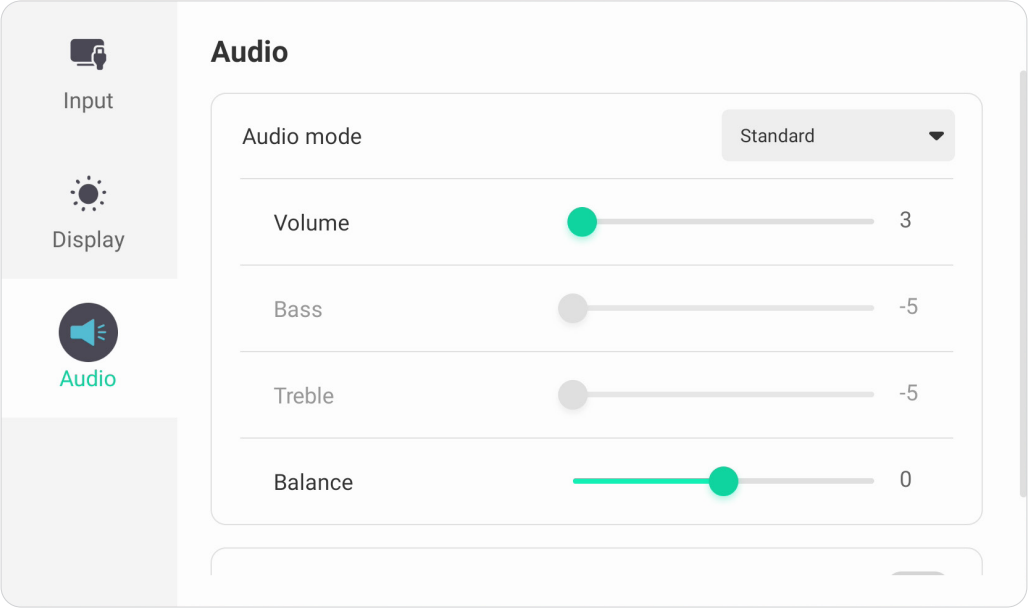 View of Audio settings.
View of Audio settings.
Setting |
Description |
||||||||||
|---|---|---|---|---|---|---|---|---|---|---|---|
| Audio Mode | Select a predefined audio setting.
|
||||||||||
| Volume | Increase or decrease the display’s volume level. | ||||||||||
| Bass | Increase or decrease the bass level (lower-pitched sounds). | ||||||||||
| Treble | Increase or decrease the treble level (higher-pitched sounds). | ||||||||||
| Balance | Adjust the left/right speaker balance. | ||||||||||
| Mute | Toggle mute ON or OFF. | ||||||||||
 Inicio
Inicio